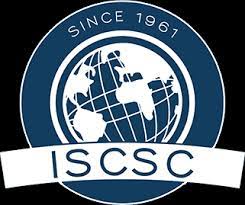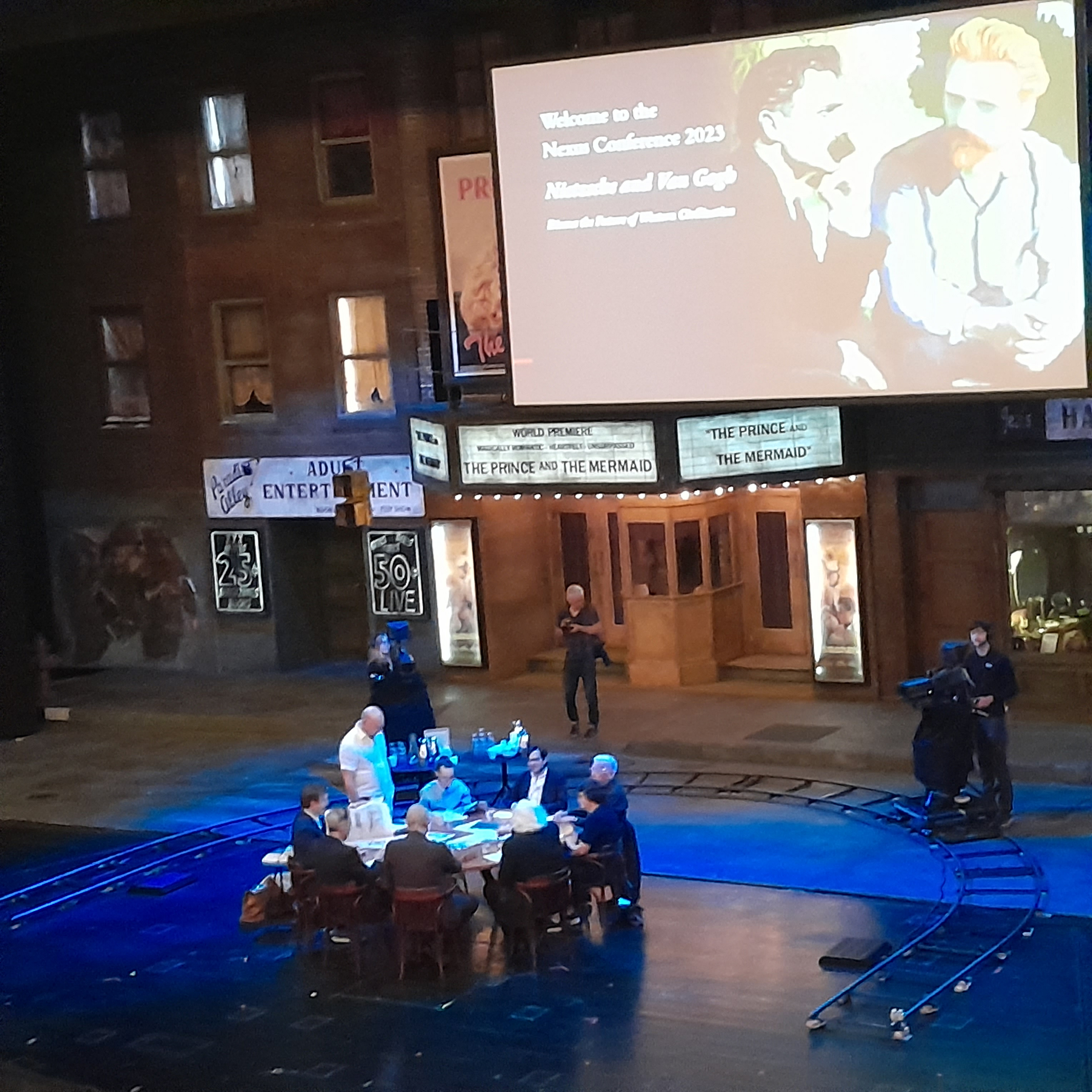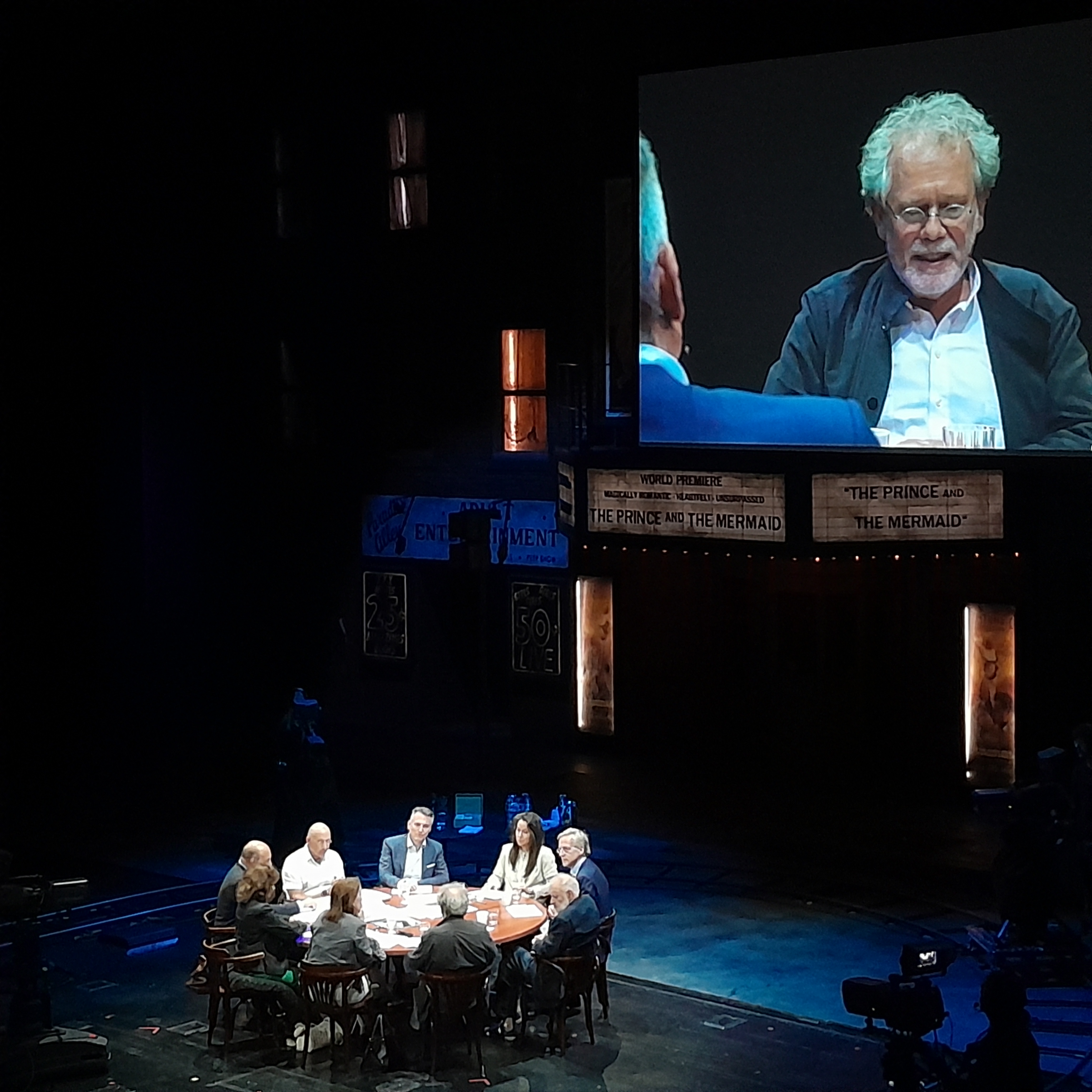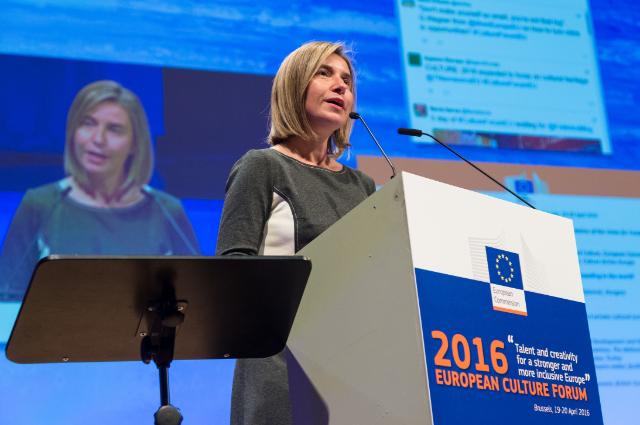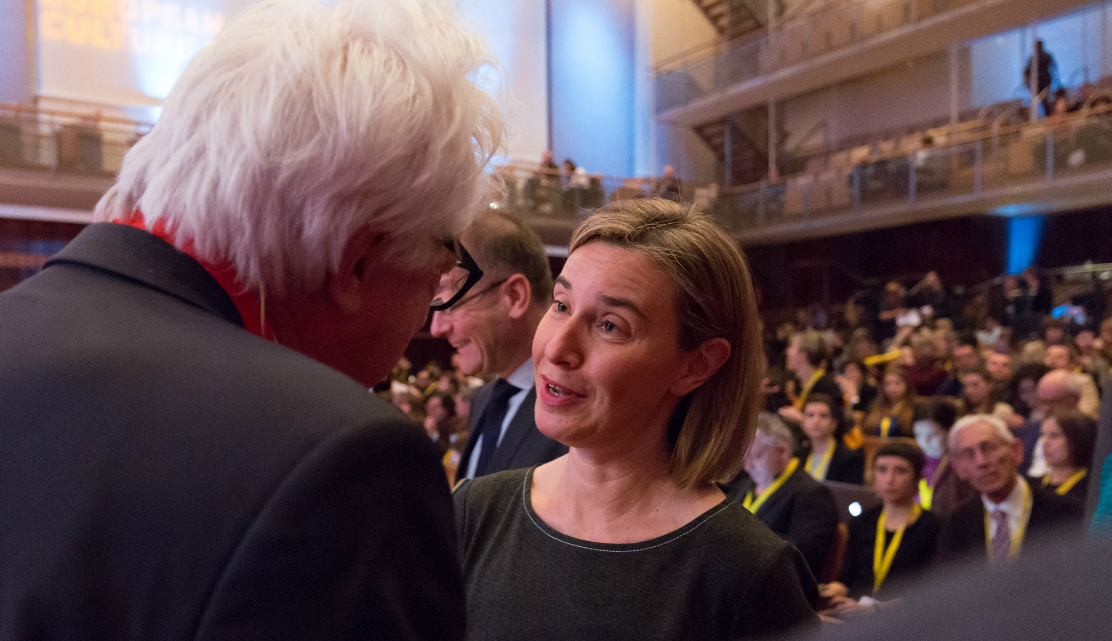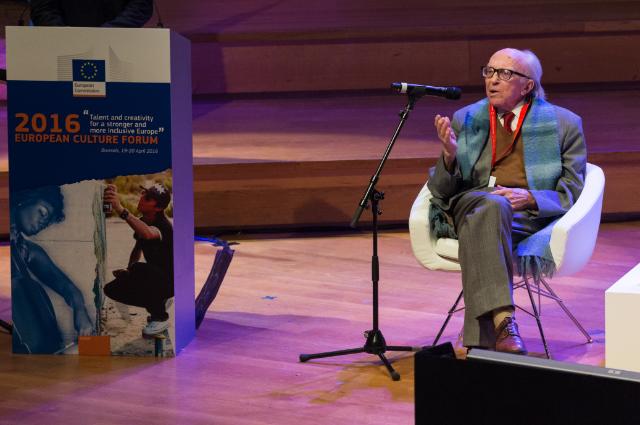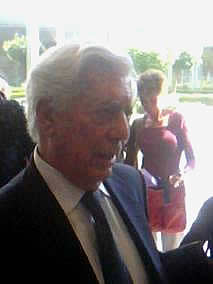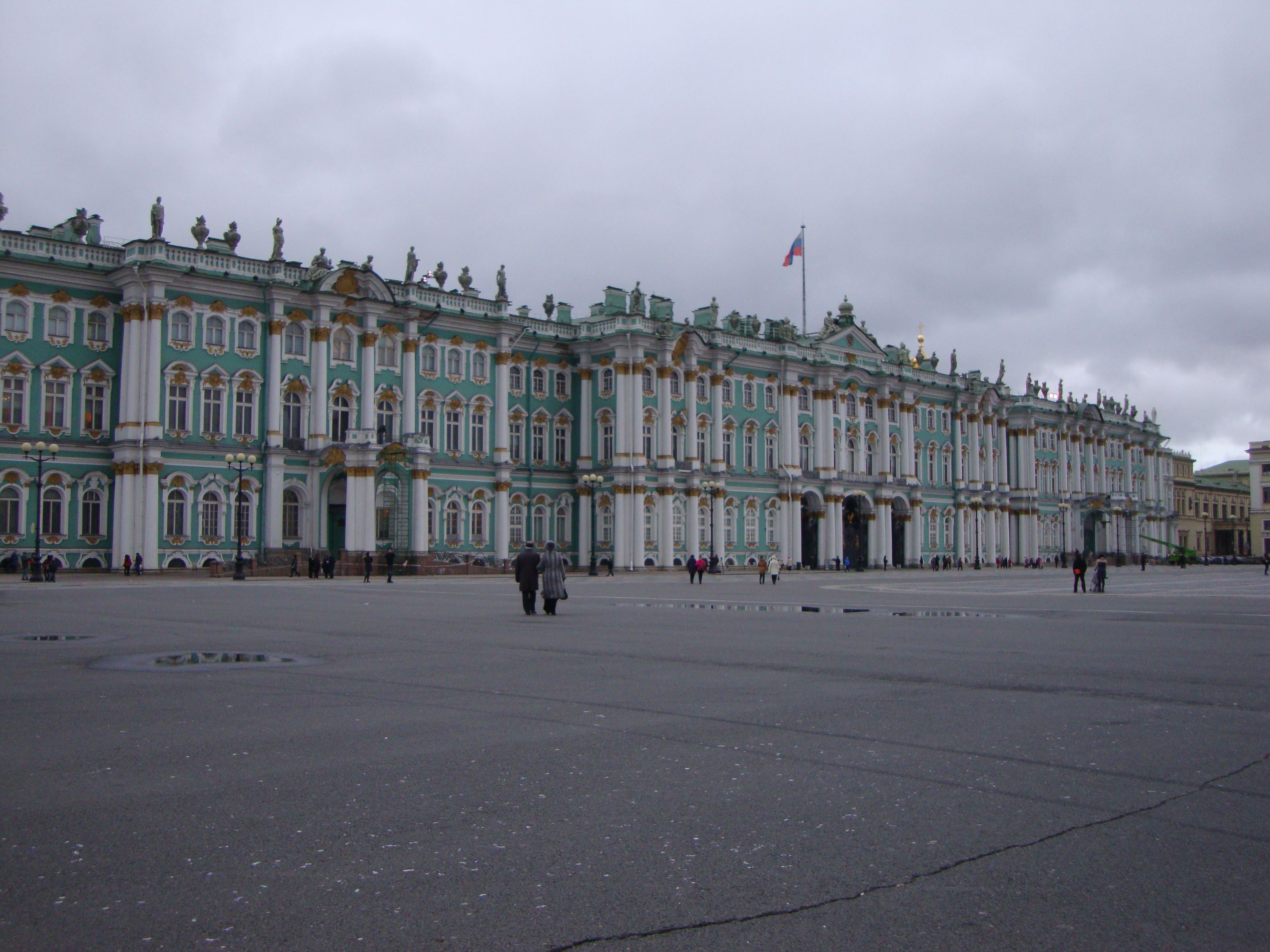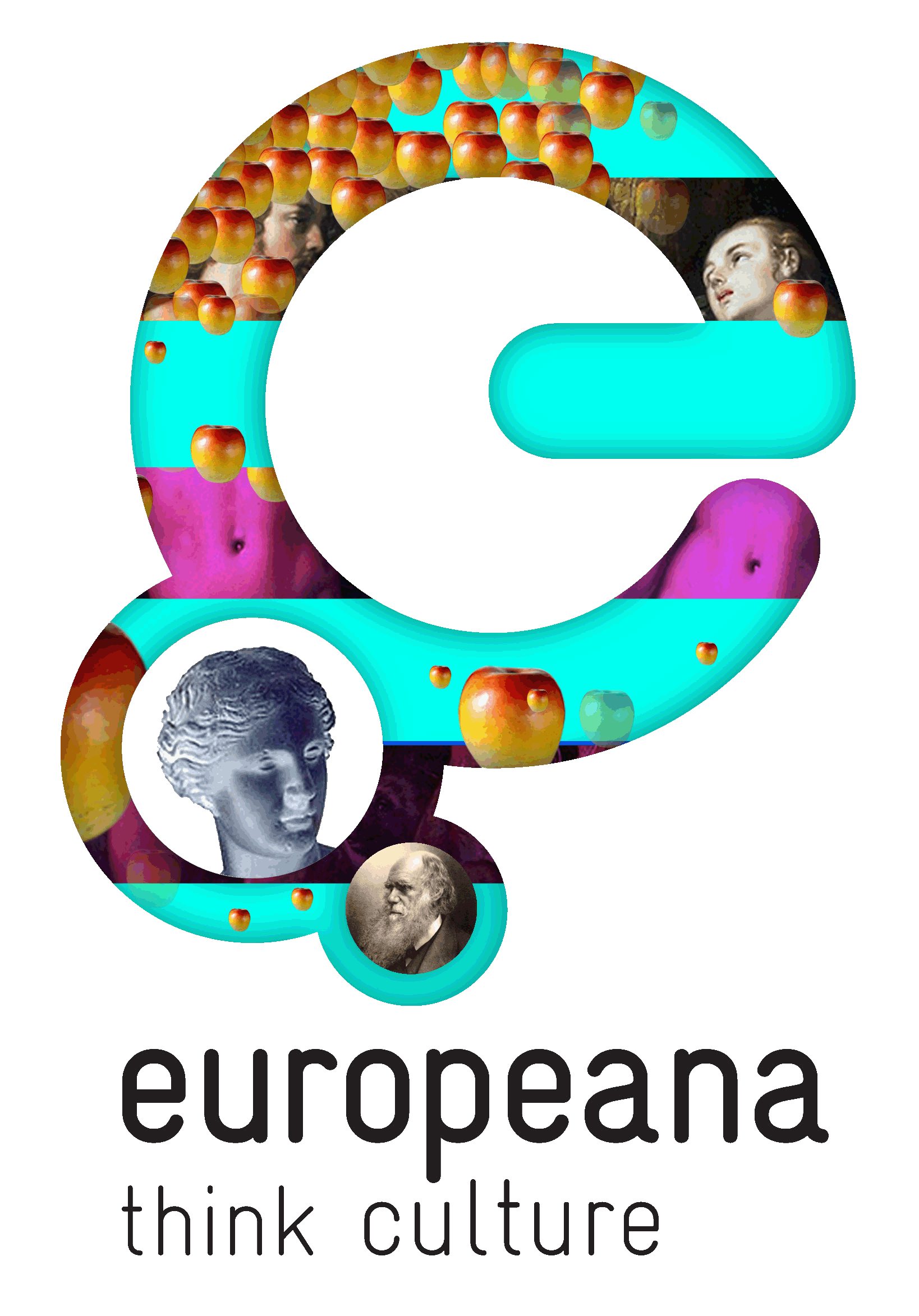Music, art, story-telling and architecture
Some cultural and artistic modalities are also characteristically Western in origin and form. While dance, music, story-telling, and architecture are human universals, they are expressed in the West in certain characteristic ways. The symphony has its origins in Italy. Many important musical instruments used by cultures all over the world were also developed in the West; among them are the violin, piano, pipe organ, saxophone, trombone, clarinet, and the theremin. The solo piano, symphony orchestra and the string quartet are also important performing musical forms. The ballet is a distinctively Western form of performance dance. The ballroom dance is an important Western variety of dance for the elite. The polka, the square dance, and the Irish step dance are very well-known Western forms of folk dance.
While epic literary works in verse such as the Mahabarata and Homer's Iliad are ancient and occurred worldwide, the novel as a distinct form of story telling only arose in the West (with the possible exception, though isolated, of the Japanese Tale of Genji) in the period 1200 to 1750. Photography and the motion picture as a technology and as the basis for entirely new art forms were also developed first in the West. The soap opera, a popular culture dramatic form originated in the United States first on radio in the 1930's, then a couple of decades later on television. The music video was also developed in the West in the middle of the twentieth century.
The arch, the dome and the flying buttress as architectural motifs were first used by the Romans. Important western architectural motifs include the doric, corinthian and the ionic column, and the Romanesque, Gothic, Baroque and Victorian styles are still widely recognised, and used even today, in the West. Much of Western architecture emphasises repetition of simple motifs, straight lines and expansive, undecorated planes. A modern ubiquitous architectural form emphasising this characteristic, first developed in New York and Chicago, is the skyscraper.
Oil painting is said to have originated by Jan van Eyck, and perspective drawings and paintings had their earliest practitioners in Florence. In art, the Celtic knot is a very distinctive Western repeated motif. Depictions of the nude human male and female in photography, painting and sculpture are frequently considered to have special artistic merit. Realistic portraiture is especially valued. In Western dance, music, plays and other arts, the performers are only very infrequently masked. There are essentially no taboos against depicting God, or other religious figures, in a representational fashion.
Influence of Western Culture
Elements of Western culture have had a very influential role on other cultures worldwide. People of many cultures, both Western and non-Western, equate "modernisation" with "westernisation," but many non-Westerners (and some Westerners) object to the implication that all societies should also adopt Western ideas and values. Some members of the non-Western world have suggested that this the link between technological progress and certain harmful Western values provides a reason why much of "modernity" should be rejected as being incompatible with their vision and the values of their societies.
What is generally uncontested, is that much of the technology and social patterns which make up what is defined as "modernisation" were developed in the Western world. Whether these technological and social patterns be intrinsically part of Western culture, is more difficult to answer. Many would argue that the question cannot be answered by a response from positivistic science and instead is a "value" question which must be answered from a value system (e.g. philosophy, religion, political doctrine). Nonetheless, much of anthropology today has shown the close links between the physical environment and daily activities and the formation of a culture (the findings of cultural ecology, among others). Therefore, the impact of "modernisation" and "modern" technology may not merely be "scientific" (that is, physical) but may possibly be closely linked with a certain culture, that of the West, such that without such technology, Western culture today would have been dramatically different from how it is known in actual historical and contemporary times.
Music, art, story-telling and architecture
Some cultural and artistic modalities are also characteristically Western in origin and form. While dance, music, story-telling, and architecture are human universals, they are expressed in the West in certain characteristic ways. The symphony has its origins in Italy. Many important musical instruments used by cultures all over the world were also developed in the West; among them are the violin, piano, pipe organ, saxophone, trombone, clarinet, and the theremin. The solo piano, symphony orchestra and the string quartet are also important performing musical forms. The ballet is a distinctively Western form of performance dance. The ballroom dance is an important Western variety of dance for the elite. The polka, the square dance, and the Irish step dance are very well-known Western forms of folk dance.
While epic literary works in verse such as the Mahabarata and Homer's Iliad are ancient and occurred worldwide, the novel as a distinct form of story telling only arose in the West (with the possible exception, though isolated, of the Japanese Tale of Genji) in the period 1200 to 1750. Photography and the motion picture as a technology and as the basis for entirely new art forms were also developed first in the West. The soap opera, a popular culture dramatic form originated in the United States first on radio in the 1930's, then a couple of decades later on television. The music video was also developed in the West in the middle of the twentieth century.
The arch, the dome and the flying buttress as architectural motifs were first used by the Romans. Important western architectural motifs include the doric, corinthian and the ionic column, and the Romanesque, Gothic, Baroque and Victorian styles are still widely recognised, and used even today, in the West. Much of Western architecture emphasises repetition of simple motifs, straight lines and expansive, undecorated planes. A modern ubiquitous architectural form emphasising this characteristic, first developed in New York and Chicago, is the skyscraper.
Oil painting is said to have originated by Jan van Eyck, and perspective drawings and paintings had their earliest practitioners in Florence. In art, the Celtic knot is a very distinctive Western repeated motif. Depictions of the nude human male and female in photography, painting and sculpture are frequently considered to have special artistic merit. Realistic portraiture is especially valued. In Western dance, music, plays and other arts, the performers are only very infrequently masked. There are essentially no taboos against depicting God, or other religious figures, in a representational fashion.
Beyond art and politics
Apart from food, literature, art, music, religion, and politics, many aspects of Western culture differ from other cultures around the world. Western culture has evolved and changed throughout the past centuries, but at the same time certain themes and trends persist to varying degrees:
-
An emphasis on technological innovation and science coupled with a belief in progress; Despite institutional and systemetic racial segragation as found in places such as the United States and South Africa, there is less emphasis on connections with the past, such as ancestory and ethnocentrism.
-
Despite history of property law applied to people (slavery), holocaust, Jim Crow laws and prisons such as Guantanomo Bay, an emphasis on human rights, which are considered natural rights.
-
Emphasis on personal responsibility;
-
A strong sense of personal privacy and civil rights;
-
Regard for individualism, personal achievement and self-realization as more important values than social consensus or conformity.
-
Consensus that personal enrichment of political office holders is an offense against society;
-
Allegiance to the nuclear family, rather than to the extended family.
Occidental marriage customs which are occasionally different in other cultures today are:
-
A strict legal requirement for monogamous and consensual marriage;
-
An occasionally casual attitude toward sex between unmarried persons;
-
An expectation of marriage as a source of personal fulfilment through romance, rather than as a practical domestic arrangement;
-
Reduced or no legal enforcement of social bans on adultery;
Western scientific and technological achievements
A feature of Western culture is its focus on science and technology, and its ability to generate new processes, materials and material artifacts. It was the West that first developed steam power and adapted its use into factories, and for the generation of electrical power. Nuclear power stations are derived from the first atomic pile in Chicago (1942). The electrical dynamo, transformer, electric motor, and electric light, and indeed most of the familiar electrical appliances, were inventions of the West. New communication devices and systems such as the telegraph, the telephone, fax, the transatlantic cable, radio and television, the communications and navigation satellites, mobile phones, the internet and the web can all be credited to the West. Furthermore, ubiquitous materials such as concrete, aluminum, clear glass, synthetic rubber, synthetic diamond and the plastics, among others, are all inventions of the West. Iron and steel ships, bridges and skyscrapers first appeared in the West. The pencil, ballpoint pen LCD, LED, the photograph, photocopy, laser printer and plasma display screen were too. The ship's chronometer, the engine powered screw propeller, the locomotive, bicycle, automobile, and aeroplane were all invented in the West. Eyeglasses, the telescope, and the microscope and electron microscope, all the varieties of chromatography, protein and DNA sequencing, x-rays, and light, ultraviolet and infrared spectroscopy, were all first developed and applied in Western laboratories, hospitals and factories.
In medicine, Vaccination, anesthesia, MRI, the birth control pill, and all the pure antibiotics were discovered in the West. The method of preventing Rh disease, the treatment of diabetes, and the germ theory of disease were discovered by Westerners. The eradication of that ancient scourge, smallpox, was led by a Westerner, Donald Henderson. Radiography, Computed tomography, Positron emission tomography and Medical ultrasonography are important diagnostic tools developed in the West. So were the stethoscope, electrocardiograph, and the endoscope. Vitamins, hormonal contraception, hormones, insulin, Beta blockers and ACE inhibitors, along with a host of other medically proven drugs were first utilised to treat disease in the West. The double-blind study and evidence-based medicine are critical scientific techniques widely used in the West for medical purposes.
In mathematics, calculus, statistics, logic, vector, tensor and complex analysis, group theory and topology were developed by Westerners. In biology, evolution, chromosomes, DNA, genetics and the methods of molecular biology are creatures of the West. In physics, the science of mechanics and quantum mechanics, relativity, thermodynamics, and statistical mechanics were all discovered by Westerners. The atom, nucleus, electron, neutron and proton were all unveiled by Westerners. Most of the elements, as well as the correct notion of elements themselves were discovered in the West. Nitrogen fixation and petrochemicals were achievements of Westerners. Chemistry itself became a science in the West.
Westerners are also known for their explorations of the globe and space. The first expedition to circumnavigate the Earth was by Westerners, as well as the first to set foot on the Poles, and the first to land on the moon. The landing of robots on Mars and on an asteroid, and the Voyager explorations of the outer planets were all achievements of Westerners.
Contemporary Western culture
Differences
There are many differences between the most populous regions of the western culture, the United States and Western Europe. Religion has waned considerably in Western Europe. Many western Europeans are agnostic or atheist The religiosity and the belief in a deity in the United States is still very strong, with 85-91% of the population believing in a deity.
Similarities
Western countries are more developed than other countries in the world. This means that, compared to other cultures, a smaller percentage of society is poor. The richness of the majority of westerners result in freedom expressed in consumerism. Westerners have the ability to travel around the world, which they do en masse during holidays. Western countries tend to have low fertility rates relative to less developed countries, though this has not always been the case.
Western cultures tend to emphasise the individual, making them socially and politically individualistic, rather than collective. However, a number of Western nations are or have been economically collective. Democracy, which also favors the concept of individualism, is the preferred form of government in western society. Additionally, creativity and the expression of the individual is commonly encouraged in western societies so long it does not violate any social norms or established laws. Some forms of personal expression, violating rather minor folkways are most commonly accepted. Furthermore, capitalism which is found in almost every western nation, supports an individualistic ideology. In western society consumer products are often meant to reflect upon their owner in addition to serving a utilitarian purpose. Everything from license plates, cell phone ring-tones, and kitchen sets can be custom tailored to meet the desires of each individual customer. Social critics have often pointed to high divorce rates and low amounts of civil activism as the negative externalities of individualistic societies.
Media in Western countries have paid much attention to disasters that happen around the world. Many Westerners are active in helping people around the world through charities or state intervention. The enormous amount of information, products, and subcultures leads to reduced adherence to ideologies.
Change is an important feature of Western culture. New subcultures, variations on dominant themes in politics, the arts, and technologies, constantly emerge and evolve. Tradition and authority are often viewed with suspicion, hopefully to be overwhelmed and improved by the next new thing.
Belief systems
Religion and other belief systems are often integral to a culture. Religion, from the Latin religare, meaning "to bind fast", is a feature of cultures throughout human history. The Dictionary of Philosophy and Religion defines religion in the following way:
... an institution with a recognized body of communicants who gather together regularly for worship, and accept a set of doctrines offering some means of relating the individual to what is taken to be the ultimate nature of reality.
Religion often codifies behavior, such as with the 10 Commandments of Christianity or the five precepts of Buddhism. Sometimes it is involved with government, as in a theocracy. It also influences arts.
Eurocentric custom to some extent divides humanity into Western and non-Western cultures, although this has some flaws. Western culture spread from Europe most strongly to Australia, Canada, and the United States. It is influenced by ancient Greece, ancient Rome and the Christian church. Western culture tends to be more individualistic than non-Western cultures. It also sees man, god, and nature or the universe more separately than non-Western cultures. It is marked by economic wealth, literacy, and technological advancement, although these traits are not exclusive to it.
Abrahamic religions
Judaism is one of, if not the first, recorded monotheistic faiths and one of the oldest religious traditions still practiced today. The values and history of the Jewish people are a major part of the foundation of other Abrahamic religions such as Christianity, Islam, as well as Samaritanism and the Bahá'í Faith.
Christianity was the dominant feature in shaping European culture for at least the last 1700 years. Modern philosophical thought has very much been influenced by Christian philosophers such as St. Thomas Aquinas and Erasmus. European colonization and missionaries have spread it.
Marriage
Religion often influences marriage and sexual practices. Most Christian churches give some form of blessing to a marriage; the wedding ceremony typically includes some sort of pledge by the community to support the relationship. In marriage, Christians draw a parallel with the relationship between Jesus Christ and His Church. The Roman Catholic Church believes it is morally wrong to divorce, and divorcées cannot remarry in a church marriage.
Cultural studies
Cultural studies developed in the late 20th century, in part through the re-introduction of Marxist thought into sociology, and in part through the articulation of sociology and other academic disciplines such as literary criticism. This movement aimed to focus on the analysis of subcultures in capitalist societies. Following the non-anthropological tradition, cultural studies generally focus on the study of consumption goods (such as fashion, art, and literature). Because the 18th- and 19th-century distinction between "high" and "low" culture seems inappropriate to apply to the mass-produced and mass-marketed consumption goods which cultural studies analyses, these scholars refer instead to "popular culture".
Today, some anthropologists have joined the project of cultural studies. Most, however, reject the identification of culture with consumption goods. Furthermore, many now reject the notion of culture as bounded, and consequently reject the notion of subculture. Instead, they see culture as a complex web of shifting patterns that link people in different locales and that link social formations of different scales. According to this view, any group can construct its own cultural identity.
Currently, a debate is underway regarding whether or not culture can actually change fundamental human cognition. Researchers are divided on the question.
Cultural change
Cultures, by predisposition, both embrace and resist change, depending on culture traits. For example, men and women have complementary roles in many cultures. One gender might desire changes that affect the other, as happened in the second half of the 20th century in western cultures. Thus there are both dynamic influences that encourage acceptance of new things, and conservative forces that resist change.
Three kinds of influence cause both change and resistance to it:
-
forces at work within a society
-
contact between societies
-
changes in the natural environment.
Cultural change can come about due to the environment, to inventions (and other internal influences), and to contact with other cultures. For example, the end of the last ice age helped lead to the invention of agriculture, which in its turn brought about many cultural innovations. In diffusion, the form of something (though not necessarily its meaning) moves from one culture to another. For example, hamburgers, mundane in the United States, seemed exotic when introduced into China. "Stimulus diffusion" refers to an element of one culture leading to an invention in another. Diffusion of innovations theory presents a research-based model of why and when individuals and cultures adopt new ideas, practices, and products.
"Acculturation" has different meanings, but in this context refers to replacement of the traits of one culture with those of another, such as happened to certain Native American tribes and to many indigenous peoples across the globe during the process of colonization. Related processes on an individual level include assimilation (adoption of a different culture by an individual) and transculturation.
Cultural invention has come to mean any innovation that is new and found to be useful to a group of people and expressed in their behavior but which does not exist as a physical object. Humanity is in a global "accelerating culture change period", driven by the expansion of international commerce, the mass media, and above all, the human population explosion, among other factors. The world's population now doubles in less than years.
Culture change is complex and has far-ranging effects. Sociologists and anthropologists believe that a holistic approach to the study of cultures and their environments is needed to understand all of the various aspects of change. Human existence may best be looked at as a "multifaceted whole." Only from this vantage can one grasp the realities of culture change.
Culture tells us who we are. |

